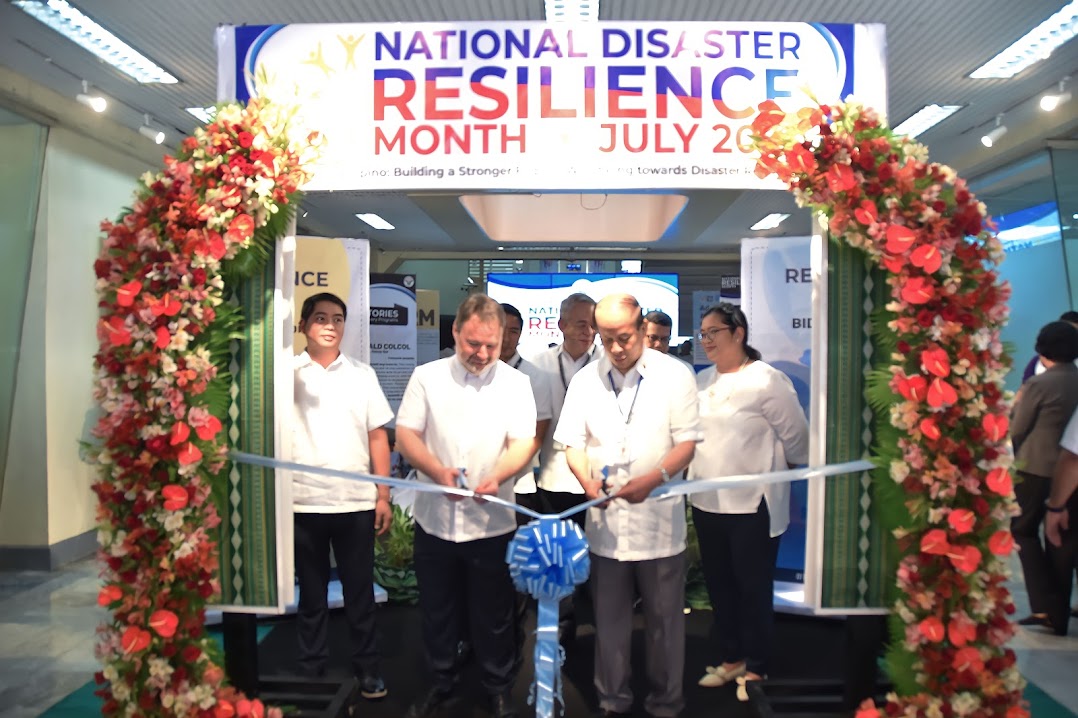
The Department of Agriculture (DA) joins the entire nation in celebrating the National Disaster Resilience Month as it vows to continuously work on developing the resilience of the agriculture and fisheries sector in the Philippines.
Adhering to its commitment in building initiatives to alleviate risks brought by various natural hazards and human-induced disasters which brought damage to crops, livestock, and fisheries, the Department has laid its plans and programs to build resilience through consciousness-raising activities.
With the theme, “BIDAng Pilipino: Building a Stronger Filipino Well-being towards Disaster Resilience,” the Department mounts a week-long exhibit at the DA Lobby which features the agency’s best practices in building disaster-resilient communities in collaboration with the Food and Agriculture Organization (FAO) of the United Nations.
“The FAO has been a long-time partner of the Department in developing the resiliency of farmers and fisherfolk through its collaborative projects,” DA Assistant Secretary for Operations Arnel De Mesa said during the opening of ceremony of the National Disaster Resilience Month held at the DA Central Office in Quezon City.
De Mesa highlighted the importance of working together to attain adaptability and strength in facing the inevitable effects of disasters.
“Building disaster resilience is a collaborative effort. Let us all work together towards a resilient nation, particularly the agriculture and fisheries sector,” he said.
The DA and FAO have been working closely to help the rural agriculture community adapt to climate-related disasters and improve climate resiliency. Among the projects that the two institutions are working with is the recently approved project, “Adapting Philippine Agriculture to Climate Change” under the Green Climate Fund, and Anticipatory Actions or Forecast-based Financing.
FAO Country Representative for the Philippines Lionel Dabbadie recognized the DA’s efforts in mitigating the hazardous effects of disasters to the agri-fishery through various initiatives.
“We need to invest in science; we need to invest in technologies. We need to work together. And we need to support innovation, emergence, and scaling,” he emphasized.
Meanwhile, a webinar series that aims to capacitate farmers and fisherfolk on social protection and risk transfer mechanisms as a way to help them cope with the effects of a disaster and improve their financial security will also be conducted. Additionally, with the expected onset of El Niño, topics such as technologies and agricultural practices that can aid the agri-fishery sector hurdle the phenomenon will also be discussed.
The observance of National Disaster Resilience Month (NDRM) is mandated through Executive Order Number 29 signed on June 28, 2017 that aims “to promote the significance of disaster resilience which pertains to the ability of individuals, communities, organizations, and states to adapt to and recover from the effects of hazards and disasters through effective risk management.” With this the NDRM shall be observed throughout the country by carrying out activities and initiatives relative to building disaster resilience. ### (Ira Y. Cruz, DA-AFID)













